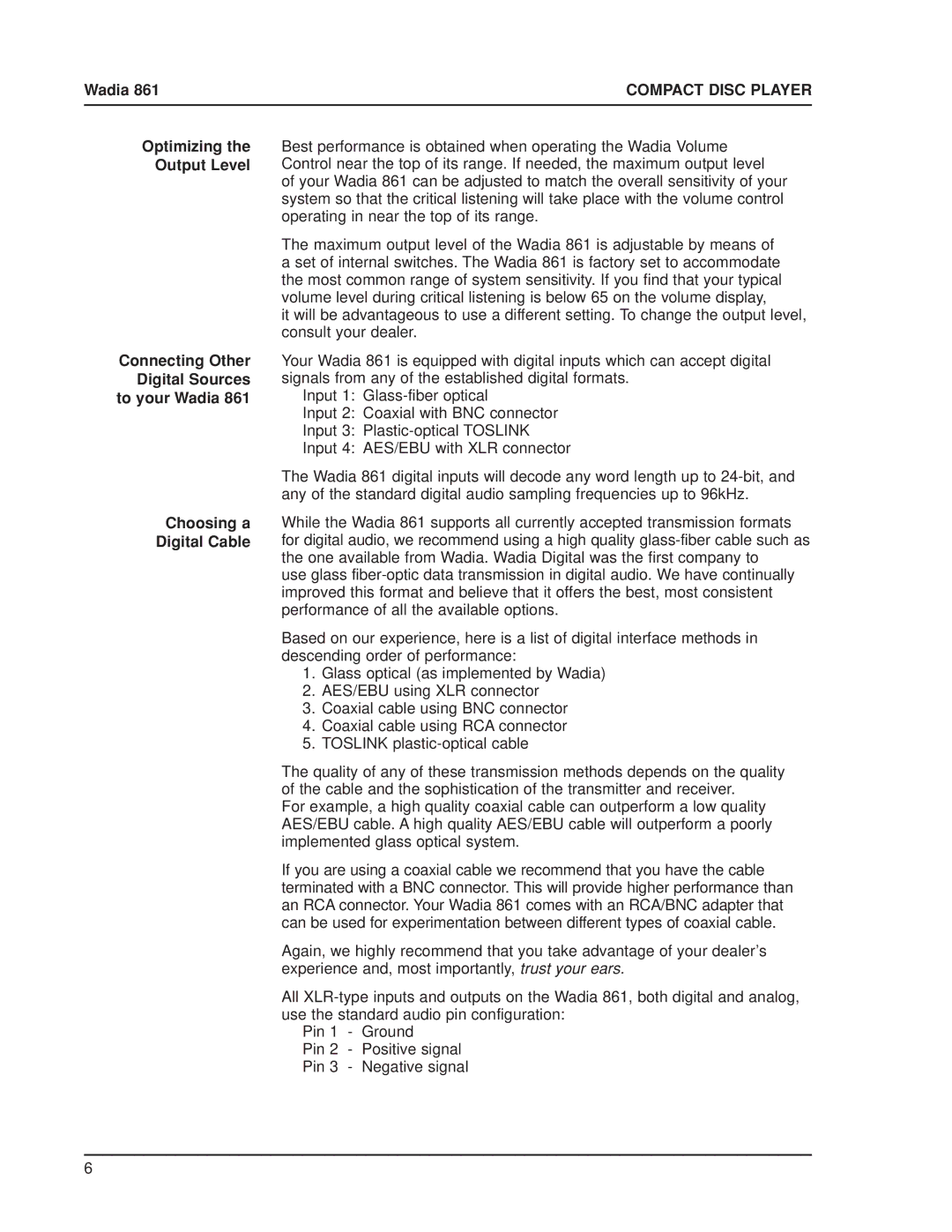861 specifications
Wadia Digital has long been recognized as a pioneer in high-end audio equipment, and the Wadia 861 is no exception. This CD player, first introduced in the late 1990s, has carved out a noteworthy reputation in the audiophile community for its exceptional build quality and sonic performance.One of the standout features of the Wadia 861 is its proprietary Digital to Analog Converter (DAC) design. The unit employs a 24-bit/192 kHz DAC that delivers an extraordinary level of detail and clarity. This high-resolution capability allows the Wadia 861 to reproduce audio tracks with a depth and richness that many standard CD players cannot match. The DAC is complemented by Wadia’s unique DigiMaster technology, which is responsible for precision digital filtering, contributing to the player’s ability to deliver a clean and natural sound.
Another noteworthy aspect of the Wadia 861 is its construction. Built with a robust chassis, the player minimizes resonance and vibration, providing a stable platform for the sensitive internal components. This attention to physical construction ensures that sound quality is not compromised by external interferences. The elegant design also embodies Wadia’s commitment to aesthetics, making it a visually appealing addition to any high-end audio system.
The Wadia 861 features both balanced and unbalanced output connections. The balanced outputs are particularly advantageous for those looking to integrate the player into a sophisticated audio setup, as they help to eliminate potential noise and maintain signal integrity over longer cable runs. Additionally, the unit has digital outputs, giving users the flexibility to connect to external DACs or processors, further enhancing its capabilities.
Moreover, the Wadia 861 supports a range of digital formats. While it is primarily designed for CD playback, its advanced technology ensures that it can effectively handle various digital audio signals. This versatility broadens its usability, accommodating various audio setups, whether through direct playback or as part of a larger digital audio chain.
In summary, the Wadia Digital 861 remains a benchmark for high-fidelity CD playback, thanks to its state-of-the-art DAC, solid construction, and superior audio output options. Audiophiles seeking an enriching listening experience find the Wadia 861 to be a remarkable investment, showcasing the perfect blend of technological innovation and classic craftsmanship.
